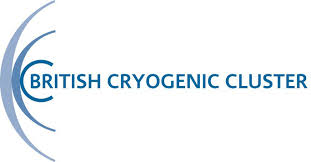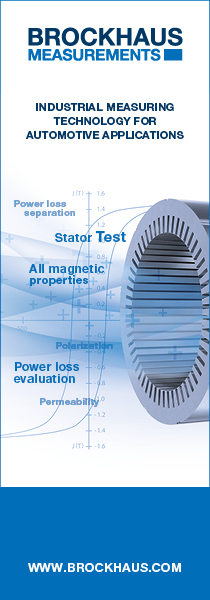Updated 15/10/15
Superconductivity continues to creep into our every day lives driven by the desire to reduce energy consumption. In addition to the uses where many would more commonly associate superconductivity (that of MRI / NMR and high energy physics laboratories), it is now possible to see superconducting components in the equipment used in Proton Beam Therapy as well as a whole host of applications within the energy generation and distribution industries. The nature of superconductivity means that devices making use of this incredible phenomenon must rely heavily on materials and systems capable of cooling efficiently to the low temperatures required.
This one day event will explore a combination of academic and industrial endeavour covering topics ranging from material production through to deployment in particular applications. On the academic side, there will be presentations on HTS machines, covering areas in motors and generators from Cambridge University, an HTS machine design from Bath University, HTS Accelerator Magnets from CERN and Fault Current Limiter from Manchester University. On the industrial side, the presentations cover areas of research magnets from Oxford Instruments, a tokamak from Tokamak Energy, HTS aircraft propulsion system from Rolls-Royce and Cranfield University, and REBCO Coated Superconductors from 3Cs Ltd.
The event is being held at the Rutherford Appleton Laboratory (RAL), operated by the UK Science and Technology Facilities Council. It is home to the Diamond Light Source (the world’s largest medium energy synchrotron source), the ISIS pulsed neutron and muon source and a host of reserch communities at the forefront of research across a broad range of scientific and engineering disciplines.
A tour of the MICE experiment will be available after the presentations.
Seminar Chairs:
- Dr Wenbin Ma, Oxford Instruments
- Dr Jeremy Howard-Knight, Siemens
The UK Magnetics Society is honoured to be pairing its 2015 biennial superconductivity event with BCC‘s CCD6-2015: 6th Cryogenic Cluster Day, held at RAL which looks into the commercialisation of cryogenic and superconducting technologies across diverse applications in science and industry which is being held in the same venue on the 23rd of September.
Coated Superconductor Cylinders for Applications in Machines
by Dr Eamonn Maher of 3-Cs Ltd
The 3-Cs approach to next-generation superconducting machines is fundamentally different from conventional approaches based on bulk materials and/or fragile superconductor windings.
This alternative approach does not involve winding processes, and superconductor coils are instead fabricated by patterning Coated Conductor Cylinders. Thin superconducting films can be patterned on the curved surfaces to produce almost any coil configuration and therefore virtually any required field distribution.
You must be a member to download papers. Membership Information...
You must be a member to download papers. Membership Information...
HTS Armature Design for Fully HTS Machines
by Dr Min Zhang & Dr Wijia Yuan of Department of Electronic and Electrical Engineering, University of Bath
HTS armature design for fully HTS machines (UK magnetic society seminar)
Min Zhang, Weijia Yuan, Department of Electronic and Electrical Engineering, University of Bath
Fully HTS machines have become a new research focus, since they can provide the high power density for electrical propulsion and offshore wind generation. The key technique challenge of developing fully HTS machines lies in the design of HTS alternating current winding (HTS armature). The presentation reviews the latest progress on the development of HTS armature for fully HTS machines. It then focuses on the HTS armature design using 2G HTS. The presentation provides a detailed study on AC loss estimation for HTS armatures, as well as a novel winding arrangement to reduce harmonics and eddy current loss.
You must be a member to download papers. Membership Information...
HTS – An Enabling Technology for Spherical Tokamak Fusion Reactors
by Paul Noonan of Tokamak Energy
The theoretical potential of spherical tokamaks as compact fusion energy devices has been known for some time. However the engineering of the compact central column has always been seen as an obstacle to practical application.
Tokamak Energy is a venture capital company set up to exploit the properties of HTS to overcome this barrier, and so open the way to rapid development of a commercial fusion reactor.
The talk explains the challenges, and our strategy for overcoming them.
You must be a member to download papers. Membership Information...
HTS motors and Generators
by Tim Coombs of Cambridge University
Considerable advances have been made in recent years in HTS tape. Critical currents have been raised, longer continuous lengths have been fabricated and structural strength has been improved. Progress towards ever lower resistance and even no resistance joints has been made but the presence of resistance in the joints (together with price) still means that LTS is preferred in applications such as MRI. The Electrical Power and Energy Conversion (EPEC) superconductivity group at Cambridge University has been working on the use of flux pumping to activate superconducting coils in motors and magnets in general. In this paper we report the current status of the flux pumping technology. The paper will show first the fundamental principles of the flux pump, second the performance and finally the potential applications both in the near and the far term. Flux pumping enables the magnetisation of superconducting permanent magnets by the application of time varying magnetic fields. Using this technique means that superconducting coils can be operated in persistent mode without the need for either current leads or a persistent current switch and that magnetisation can be achieved without the need for high current power supplies or external sources of magnetic fields. We will present both experimental and modelling results showing the present and expected future behaviour of flux pumped coils.
You must be a member to download papers. Membership Information...
HTS SFCL in the University of Manchester
by Xiaoze Pei of The University of Manchester
The development and use of renewable energy is key to reducing the environmental impact of fossil fuels. The increased renewable energy generation increases fault levels creating problems for existing protection equipment on the low voltage distribution networks. Superconducting fault current limiters (SFCLs) installed at strategic points in an electrical network can circumvent the necessity to upgrade existing protection equipment
This talk presents the development of an 11kV, 1250A resistive SFCL for the distribution network as part of an ETI consortium project. The presentation focuses on the superconducting coil design using multi-stranded MgB2 wire. The work carried out to assess the current capacity and AC losses for several multi-strand MgB2 wire configurations for SFCL applications is presented. This presentation also covers an SFCL integrated with a vacuum interrupter, which represents a potential resistive SFCL system that is controllable, compact and quick to recover. Finally, two novel hybrid DC circuit breakers were presented and validated at low voltage levels. Design of a 10 kV / 5 kA test circuit and prototype DC circuit breaker is underway. The presentation concludes with the chances and challenges for designing and building a resistive SFCL for distribution networks and a HVDC circuit breaker using superconductor.
You must be a member to download papers. Membership Information...





